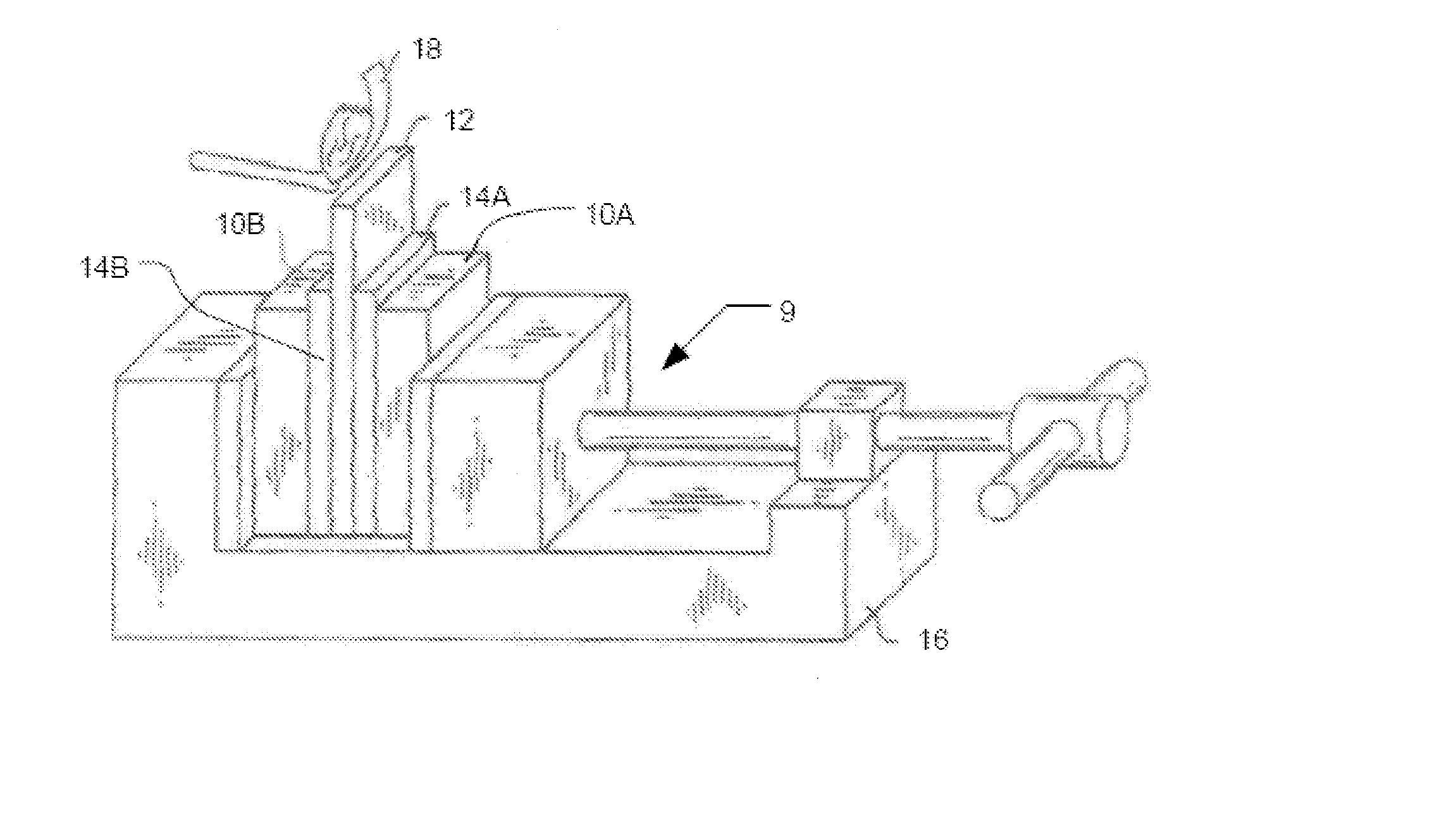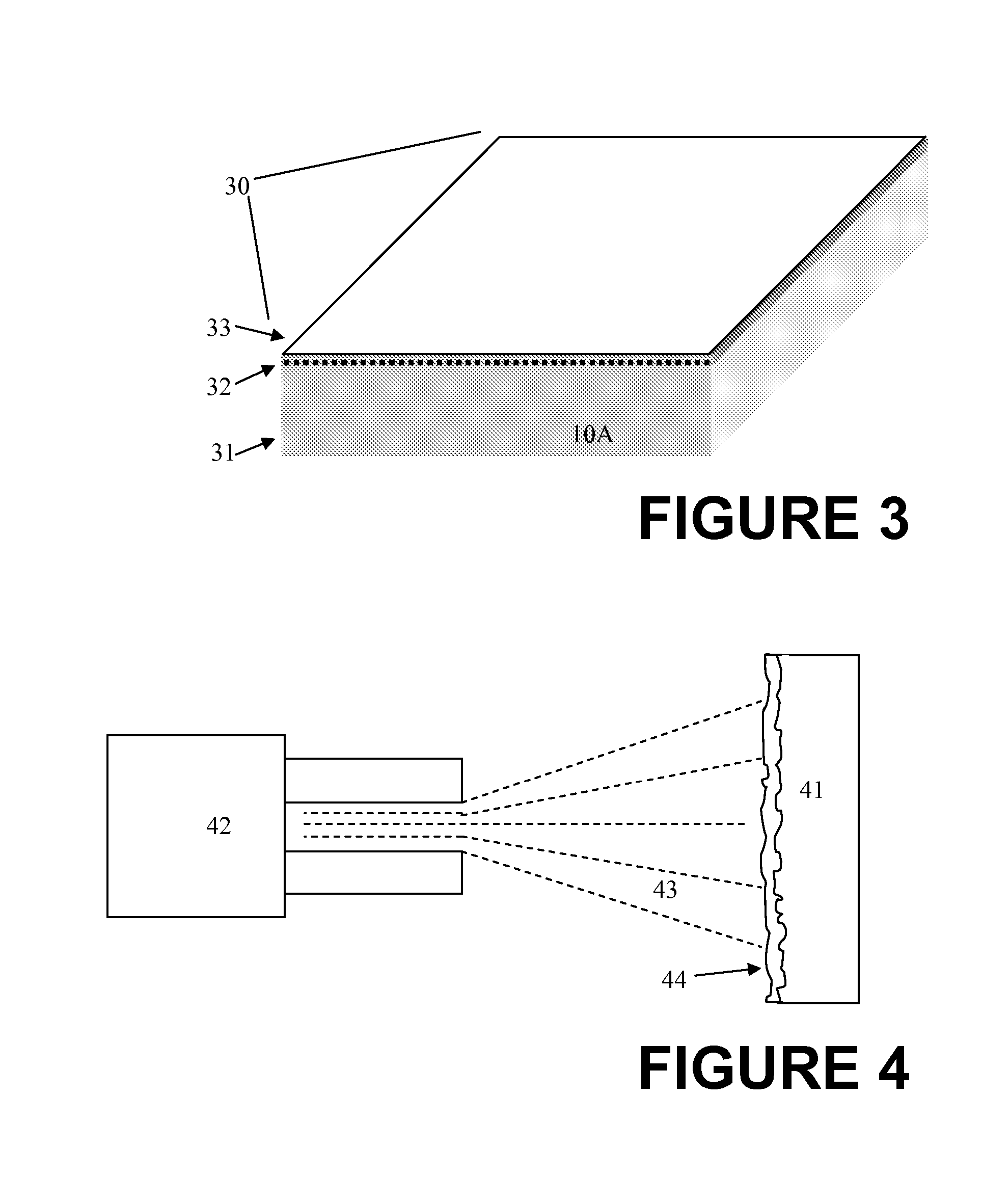Reactive Multilayer Joining WIth Improved Metallization Techniques
a multi-layer joining and metallization technology, applied in the direction of superimposed coating process, soldering apparatus, manufacturing tools, etc., can solve the problems of significant thermal stress in the components, undesirable changes in the components themselves, and differences in the coefficient of thermal expansion (cte) between the material of the component body
- Summary
- Abstract
- Description
- Claims
- Application Information
AI Technical Summary
Benefits of technology
Problems solved by technology
Method used
Image
Examples
example 1
Vacuum Metallization of Vacuum Sputtering Target Plate
[0061] A 6 inch diameter lanthanum sputtering target plate was bonded to a copper backing plate. Lanthanum cannot be pre-tinned with conventional or active tin-based solders due to the high diffusion rate of lanthanum into the solder. Lanthanum diffuses easily into the solder and alters the chemistry of the solder to such an extent that the melting temperature of the solder is significantly raised. Hence, an alternative surface preparation was necessary. In this example, the lanthanum sputtering target plate was metallized by physical vapor deposition. The metallization steps were as follows:
[0062] Step 1: ion assisted plasma clean
[0063] Step 2: deposition of a 100 nm titanium stick layer
[0064] Step 3: deposition of a 3 μm thick layer of Incusil braze alloy (60% silver, 30% copper, 10% indium).
[0065] In a separate operation, a copper backing plate was pre-tinned with a layer of a conventional Sn—Ag solder alloy containing 96...
example 2
Thermal Spray Metallization of a Temperature-Sensitive Aluminum Sputtering Target Plate
[0066] A braze bond was made between a 4 inch diameter fine-grained aluminum sputtering target plate and an aluminum backing plate. This bond is extremely challenging to achieve using conventional processes which involve heating up all or part of the fine grained aluminum sputtering target plate to a temperature equal to or above the melting temperature of the braze alloy. Herein, brazes are defined to have melting temperatures above 450° C., so heating up fine-grained aluminum to these temperatures causes unacceptable grain growth. In this example, fine-grained aluminum was coated with a 200 μm thick layer of braze alloy (60% Ag, 30% Cu, 10% Sn) by the HVOF spray process. This alloy's solidus temperature is 602° C. and its liquidus temperature is 718°, above the melting point of aluminum. During the deposition process the temperature of the fine-grained aluminum target plate remained below 150° ...
example 3
Thermal Spray of Nickel Followed by Braze Alloy
[0067] A 250 μm thick layer of Ni-5Al was sprayed directly onto the joining surfaces of aluminum alloy 6061 components using wire arc spraying. Following this, a 150 μm thick layer of Silver-Copper-Tin (60Ag-30Cu-10Sn) braze powder was sprayed over the Ni-5Al bond coat layer using high velocity oxy-fuel (HVOF) spray. After spraying, the sprayed surfaces were machined flat and the thickness of the braze layer was 75 μm so that the combined sprayed layers were 325 μm thick. The sprayed faces of two components 0.75 inches×0.5 inches in area were then placed together with a piece of 100 μm thick Al—Ni RCM with 3 μm Incusil on each surface between them, 5 MPa of pressure was applied, and the reaction in the RCM was initiated to bond the components. The bonds were then broken in shear to measure the bond shear strengths, as reported in Table I.
TABLE INickel and braze layers applied via thermal sprayRCMThicknessBond shearThermal Spray Metho...
PUM
| Property | Measurement | Unit |
|---|---|---|
| Grain size | aaaaa | aaaaa |
| Grain size | aaaaa | aaaaa |
| Grain size | aaaaa | aaaaa |
Abstract
Description
Claims
Application Information
 Login to View More
Login to View More - Generate Ideas
- Intellectual Property
- Life Sciences
- Materials
- Tech Scout
- Unparalleled Data Quality
- Higher Quality Content
- 60% Fewer Hallucinations
Browse by: Latest US Patents, China's latest patents, Technical Efficacy Thesaurus, Application Domain, Technology Topic, Popular Technical Reports.
© 2025 PatSnap. All rights reserved.Legal|Privacy policy|Modern Slavery Act Transparency Statement|Sitemap|About US| Contact US: help@patsnap.com



